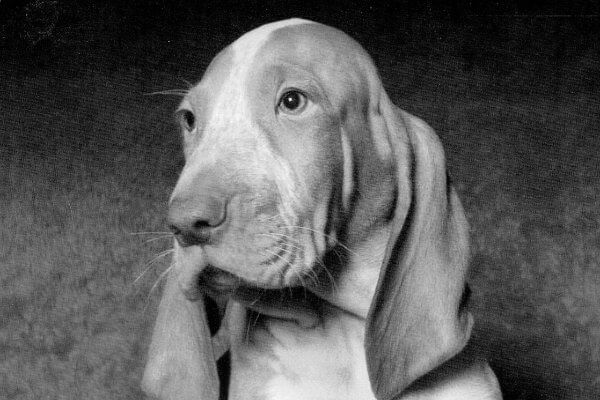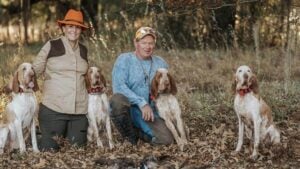
Kristi & Tony Libertore | Whiskey Hills Bracco Italiano
Kristi & Tony Libertore of Whiskey Hills breed versatile Bracco Italiano—field-proven, family-ready, and AKC-focused since 2010.
Home » Meet The Breeds » Bracco Italiano
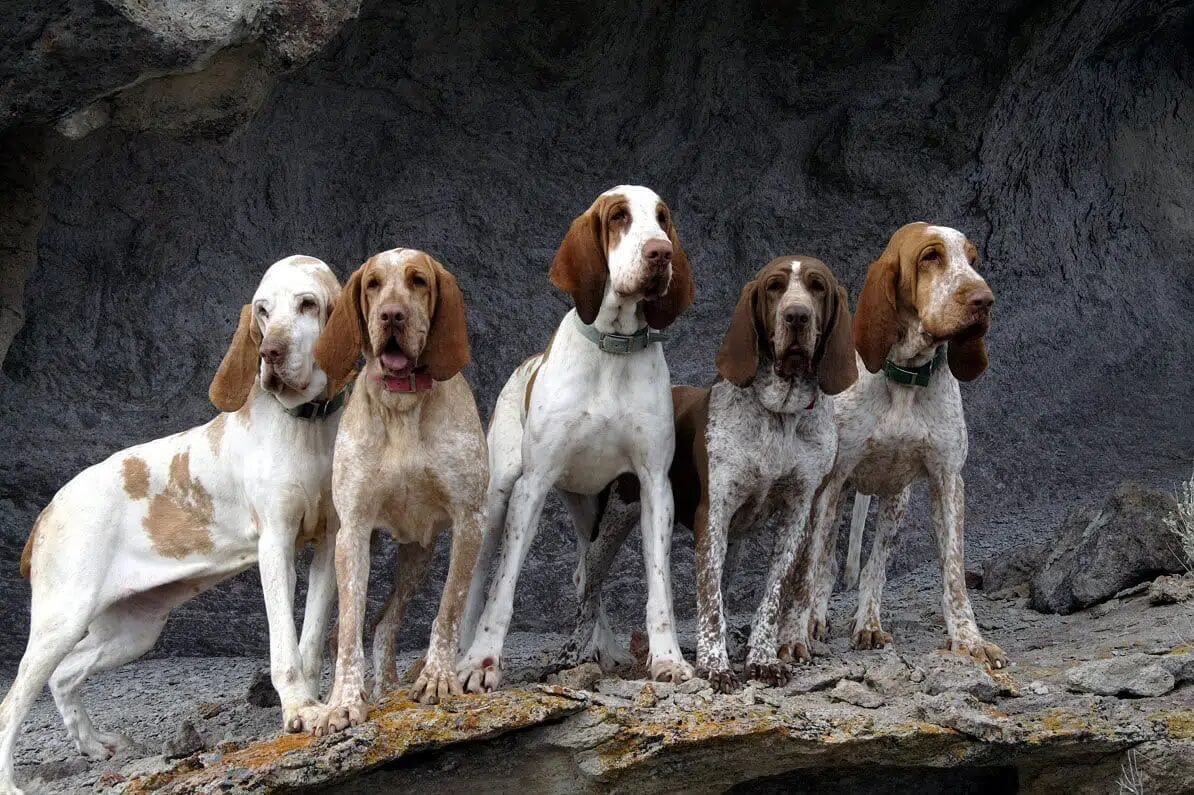
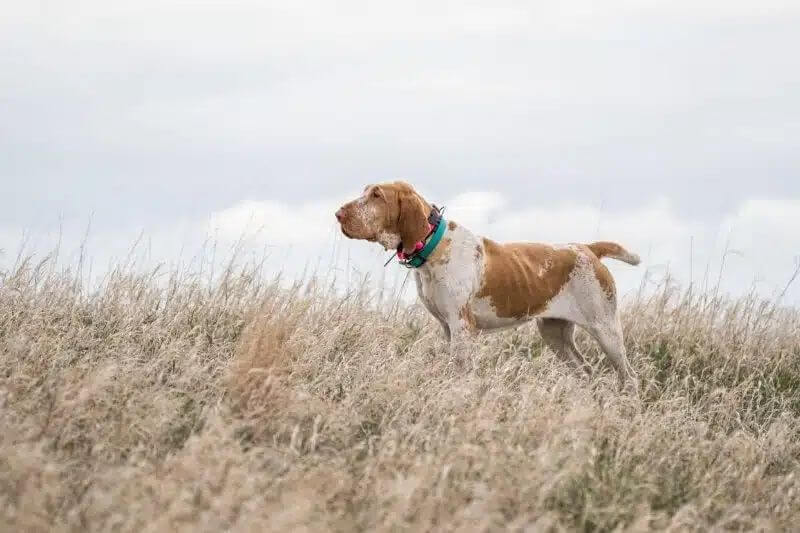
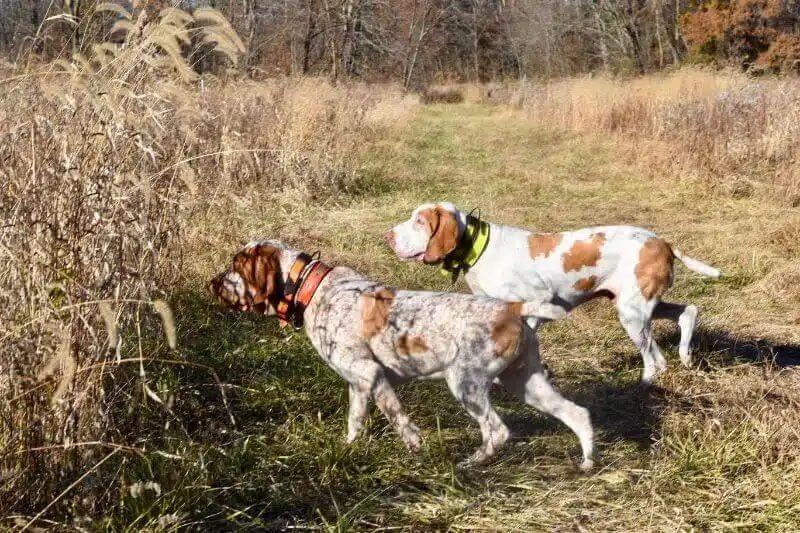
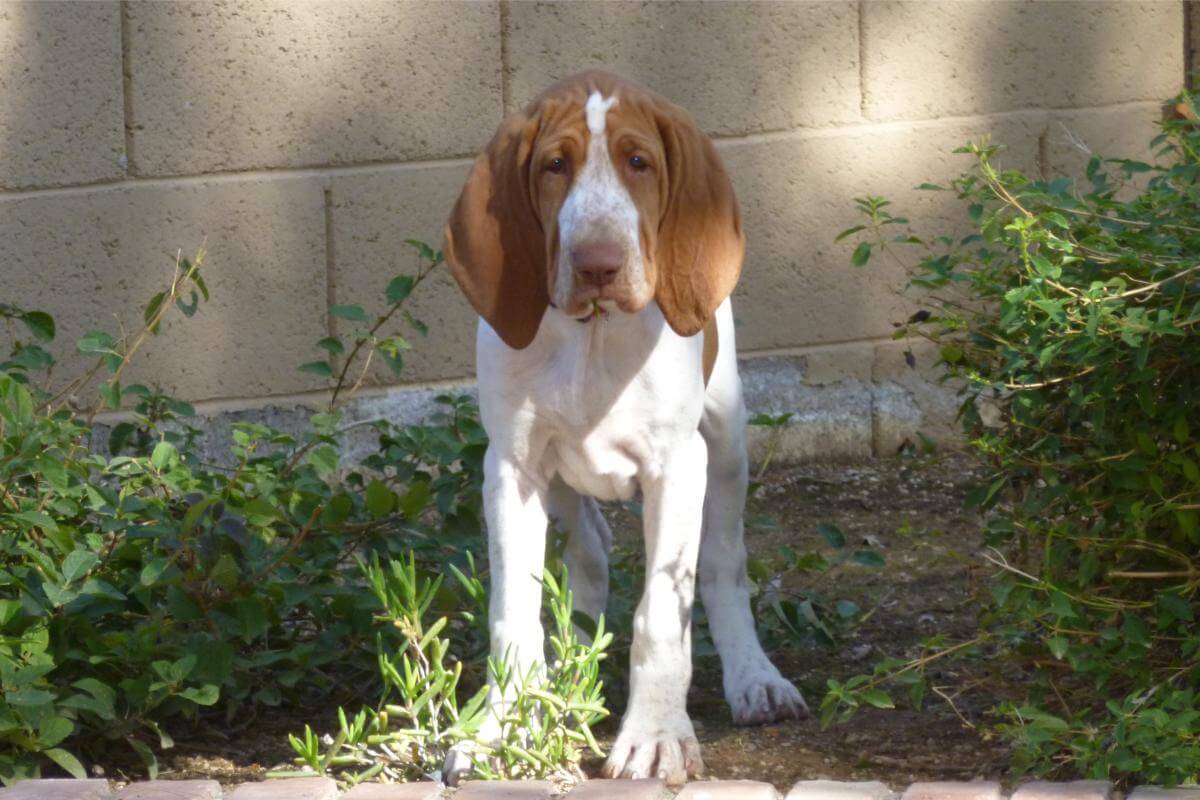
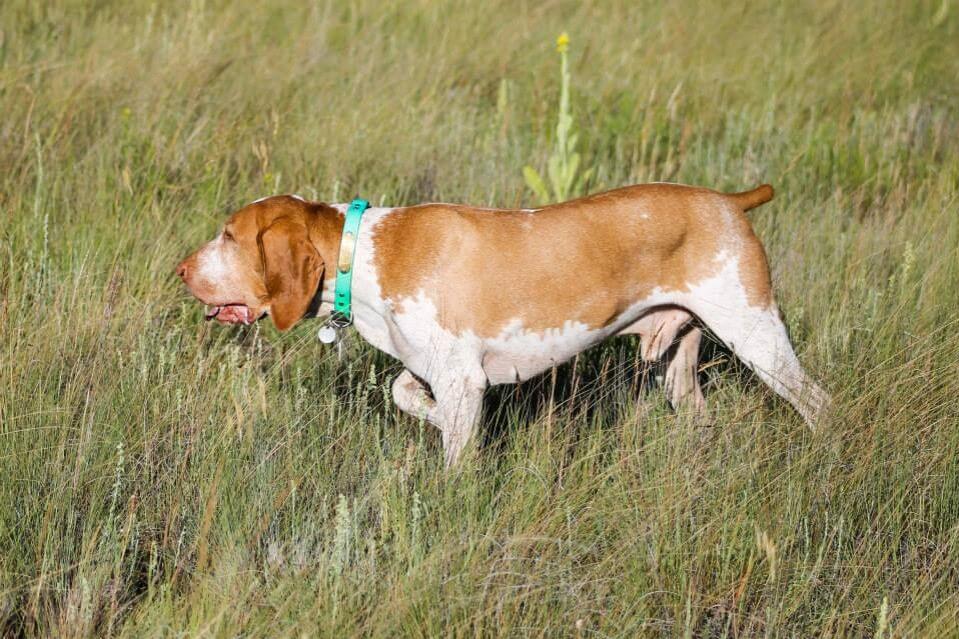
The Bracco Italiano, often referred to as the Italian Pointer, is an ancient and distinctive breed that hails from Italy. Characterized by its athletic build and soulful expression, the Bracco is not only a formidable hunting partner but also a loving family companion. Renowned for its keen nose and impressive work ethic in the field, the breed is equally cherished for its affectionate and gentle nature at home.
Sporting
21 – 27 inches
55 – 90 pounds
10 – 14 years
| Country of Origin | Italy |
|---|---|
| Bred For | Pointing Birds, Companionship |
| Known For | Intelligence, Enthusiasm, Sculpted Head, Long Ears, Fluid Trot |
| Popularity | Low |
| Temperament | Intelligent, Affectionate, Enthusiastic |
| Activities | Hunting, Running, Hiking, Conformation Shows, Dog Sports |
The Bracco Italiano holds the distinction of being one of the oldest pointing breeds in existence. Its history is a rich tapestry of evolution and refinement, deeply interwoven into the fabric of Italian culture and hunting traditions.
Tracing its lineage back to ancient times, the Bracco is believed to have descended from dogs used by the ancient Egyptians, which were later brought to Italy by Phoenician traders. Artistic depictions from as early as the 4th and 5th centuries showcase dogs bearing a strong resemblance to the Bracco Italiano that is recognized today.
During the Renaissance, the Bracco Italiano experienced a golden age. Esteemed by the Italian nobility, it became especially popular among influential families like the Medici and the Gonzaga. These noble households were instrumental in promoting and refining the breed. Throughout this era, Bracchi were often the subject of art and were featured prominently in paintings and writings.
The significance of the Bracco in Italian canine history is further underscored by the fact that it was the first dog registered by the Ente Nazionale della Cinofilia Italiana (ENCI), founded in 1888.
However, by the turn of the 20th century, the breed’s popularity began to diminish, with its numbers dwindling alarmingly. The World Wars further threatened its existence, but thanks to dedicated breed enthusiasts efforts were made to preserve and rejuvenate interest in the Bracco.
While it gained recognition from organizations like the Fédération Cynologique Internationale (FCI) and The Royal Kennel Club (UK), the Bracco Italiano remained relatively elusive on the American landscape until the 1990s. A significant milestone was achieved in 2001 when the breed was incorporated into the AKC Foundation Stock Service (FSS). Full recognition was achieved when the breed became part of the Sporting Group in 2022.
Today, the Bracco Italiano is revered not solely for its unparalleled hunting acumen but also for the unwavering companionship it offers. The breed’s enduring legacy, spanning millennia, stands as a tribute to its adaptability, magnetic charm, and resilience.
In terms of height, mature Bracco Italiano males typically stand between 23 and 27 inches at the shoulder. Their adult female counterparts measure slightly less, ranging from 21 to 25 inches in height.
When considering weight, a Bracchi can range from 55 to 90 pounds, with the exact weight dependent on the individual dog’s height.
The Bracco Italiano is a harmoniously built pointing breed, showcasing a perfect blend of endurance and power. Its build is robust and vigorous, yet it never appears heavy. The breed is square or slightly longer than its height. This proportion aids in its impressive galloping abilities in the field and its hallmark extended and fast trot. Substance-wise, the Bracco’s solid bone and well-developed muscles attest to its hunting heritage, ensuring it can work tirelessly when needed.
Texture: The Bracco Italiano boasts a coat that is both elegant and functional. A dense, short coat lies close to the body on skin that is tough but elastic. Its sleek and glossy finish not only gives the dog a polished appearance, it also ensures streamlined movement when the dog is in action. The breed’s coat is particularly well-suited for the hunting conditions of its Italian homeland, offering a level of protection against the elements and allowing the Bracco to navigate through thorny brush and dense foliage with ease.
| Standard Color | |
|---|---|
| White | ee |
| White & Orange | ee |
| White & Chestnut | ee |
Markings: Roan
A Note About Color: On the Bracco Italiano, the color orange can range from a dark amber to a rich orange. A brown-colored coat is of a warm shade, similar to that of a monk’s frock. Any other color is unacceptable. Markings may be of various sizes, although a symmetrical mask on the head and face is preferred. Tricolor, tan markings, fawn, hazel, albinism, and any trace of black are all unacceptable in the breed.
The tail of the Bracco Italiano is an extension of its graceful physique, serving both functional and expressive purposes.
The breed’s tail is set in-line with the croup and is thick at the base. In motion, the Bracco carries its tail horizontally or slightly lower, especially when it is in its natural hunting stance.
Traditionally, Bracco tails are docked, especially for hunting purposes, to prevent injury from brambles and rough terrain. However, with changing views on tail docking and its prohibition in many countries, more Bracchi now sport their full-length tails that reach down to the hock.
Whether docked or undocked, the Bracco Italiano’s tail is always in motion, often wagging enthusiastically when the dog is alert or excited. This constant movement is indicative of the breed’s energetic and spirited nature.
Owning a Bracco Italiano offers an enriching experience that is filled with affection, activity, and adventure. However, it’s essential to understand the breed’s specific needs and characteristics to provide for a relationship that’s fulfilling. Prospective Bracco owners should familiarize themselves with the breed’s temperament, exercise requirements, and health considerations to provide the best home possible.
When considering the health of the Bracco Italiano, it’s encouraging to note the breed’s generally robust nature. Yet, as with any breed or mixed breed, there are specific health concerns to be aware of.
Lifespan: A Bracco typically has a lifespan of 10-14 years. Providing a balanced diet, regular exercise, and consistent veterinary care will always support a dog’s healthy and fulfilled life.
While the Bracco Italiano is a generally a healthy breed, being informed about potential health issues can aid in early detection and treatment. Some of the more common challenges for the breed include:
To ensure the good health and well-being of a Bracco Italiano, it’s crucial for owners to schedule regular veterinary examinations. Periodic checks can help to detect potential health issues early on, increasing the likelihood of successful treatment and intervention. Additionally, understanding the specific needs and challenges of the breed can lead to a longer, healthier life for each of these magnificent dogs.
The Bracco Italiano, often described as an affectionate and versatile companion, is notable for its gentle demeanor coupled with an enthusiastic hunting spirit. Its history as a pointer and retriever is evident in its alert, attentive nature, and it possesses a keen intelligence that can make it both a joy and a challenge to live with.
For those new to dog ownership, the Bracco Italiano might be a tad overwhelming. The breed’s energy and drive, especially during those younger years, necessitates an owner who can channel this enthusiasm productively. However, with the right guidance, Bracchi can be remarkably adaptable and eager to please.
Sensitive by nature, the Bracco Italiano thrives in a loving, positive reinforcement-based environment. Harsh training methods or neglect can lead to a withdrawn or even stubborn dog. The breed’s inherent loyalty and desire for human companionship mean these dogs don’t fare well when left alone for extended periods. Separation anxiety can develop if they feel neglected or isolated.
The breed generally exhibits a friendly demeanor towards other dogs. However, socialization from an early age is essential to ensure that this friendliness extends to a wide range of animals and situations. Their hunting background might sometimes result in a high prey drive, so owners should be cautious when introducing smaller pets.
One of Bracco’s most endearing traits is its affinity for children. Gentle and patient, they make excellent family pets. Nevertheless, supervision during interactions with very young kids is always recommended to ensure safety for both the child and the dog.
When it comes to strangers, a well-socialized Bracco Italiano is typically approachable and friendly, though they might exhibit initial caution. Early exposure to a variety of people and settings can help to mold these dogs into sociable, well-rounded citizens.
The Bracco Italiano, with its active and energetic nature, requires a diet that can support its physical demands. Proper nutrition is paramount, not only to fuel its daily activities but also to maintain its overall health and well-being.
Young Braccos are bundles of energy, and their rapid growth demands a nutrient-rich diet. Puppy-specific formulations, rich in proteins and healthy fats, support their developing muscles and bones. Typically, feeding a Bracco Italiano puppy three to four times a day ensures that it receives the nutrition it needs during these critical growth stages.
As puppies transition into adulthood, Bracchi dietary needs will change. High-quality adult dog food that’s rich in lean proteins is beneficial for maintaining their muscle tone, especially considering their active lifestyle. The actual amount of food a Bracco requires can vary based on its weight, activity level, and individual metabolism. However, a general guideline would be two meals a day, with the total daily quantity based on the dog’s size and energy output.
Considering its size and build, a Bracco Italiano’s diet might range from 2 to 3 cups of high-quality dog food daily. It’s essential to closely monitor weight and adjust feeding amounts accordingly. Overfeeding or offering too many treats can lead to obesity, a condition that can exacerbate many of the common health issues in the breed.
Lastly, it’s worth noting the importance of clean, fresh water. Ensuring that your Bracco has constant access to water is vital, especially after vigorous exercise or during hot weather.
Training a Bracco Italiano is a journey that unveils the breed’s harmonious blend of eagerness to please and innate intelligence. However, the process demands patience, consistency, and an understanding of the dog’s unique temperament and characteristics.
Bracco Italiano’s sharp intellect and history as a versatile hunting dog make it a responsive and quick learner. The breed is generally easy to train, but its sensitive disposition means that it responds best to positive reinforcement techniques. Heavy-handed or punitive methods might prove counterproductive with this breed. Instead, offering praise, treats, or toys as rewards can foster a more fruitful training experience.
One of the endearing traits of the Bracco is that it isn’t particularly prone to excessive barking. Bracchi might occasionally bark to alert their owners of someone approaching, but they don’t typically display incessant vocalizations. This natural restraint, however, doesn’t mean training in this area can be overlooked. As with any dog, early training can help to manage unwanted barks and keep vocalizations in check.
The Bracco’s intelligence is a double-edged sword. While the breed can pick up commands swiftly, this sharpness also means it can easily become bored if not mentally stimulated. Without proper engagement, a Bracco might resort to undesirable behaviors as a means of self-entertainment.
When it comes to exploring the outdoors, Bracchi Italiani carry a hint of wanderlust. Their background in hunting has instilled in them a natural instinct to follow a scent or be drawn to potential prey. Owners should be cautious during walks or outdoor adventures, opting to keep these dogs on a leash or within a secure area unless the dog’s recall is impeccable. This hunting lineage also suggests a prey drive, especially towards smaller animals. It’s not a sign of aggression, but rather an instinctual behavior that can be managed with early socialization and training.
The Bracco Italiano, historically bred as a hunting dog, naturally possesses a high degree of energy and stamina. These traits underscore the importance of regular exercise to keep these dogs both physically fit and mentally stimulated.
| Energy Level | High |
|---|---|
| Exercise Requirements | 2 Hours/Day (Minimum), Daily Walks, Regular Exercise, Vigorous Running, Playing with Another Dog, Mental Stimulation |
Their energy levels are robust, and Bracchi thrive when given opportunities to stretch their legs and engage in dynamic activities. A simple walk around the block is rarely sufficient for this breed. Instead, longer walks, play sessions, and free runs in a secure area are better suited to meet their exercise requirements.
Intensity is another attribute of their exercise style. When given the chance, a Bracco Italiano enjoys sprinting and chasing, demonstrating the vigor and enthusiasm inherent to the breed’s hunting lineage. Interactive games, such as fetch or tug-of-war, not only help these dogs to burn off energy, they also reinforce the bond between each dog and its person.
Playfulness is a delightful characteristic of the Bracco Italiano. The breed is not just about work and exercise; it also adores playtime. Whether it’s romping in the yard with family members or engaging in canine sports, the Bracco’s playful demeanor shines through, bringing joy to everyone.
Yet, while the Bracco Italiano has abundant energy, it’s essential to recognize the signs when a dog needs a break. Overexertion, especially in hot weather, can lead to potential health risks. It’s crucial to monitor a Bracco’s exercise sessions, ensuring it has access to fresh water and shade, and adjust activity levels accordingly, based on weather conditions and the dog’s overall fitness.
Incorporating a balanced exercise regimen that respects the Bracco’s needs will result in a happier, healthier, and more harmonious companion, one that is fully able to share in the adventures and joys of life with its people.
The Bracco Italiano boasts a short to medium-length coat that lies close to the body, having a dense and glossy texture. This naturally elegant appearance, however, does not translate to a high-maintenance grooming routine. Instead, the Bracco is relatively easy to groom, making it an appealing choice for individuals who prefer a more hands-off approach to coat care.
| Coat Type | Short, Glossy |
|---|---|
| Grooming Requirements | Weekly Brushing, Occasional Bathing, Routine Ear Cleaning, Periodic Nail Trimming, Regular Tooth Brushing |
While the Bracco Italiano does shed, the shedding of the coat is not excessive in the breed. Regular brushing, about once a week, should suffice to remove loose hairs and keep the coat looking its best. A firm bristle brush or a hound glove works well for this purpose, helping to distribute the coat’s natural oils, promoting shine and ensuring the skin underneath remains healthy.
Baths can be infrequent for this breed, reserved for when the dog gets particularly dirty or begins to emit a noticeable odor. Over-bathing can strip the coat of its natural oils, potentially leading to skin issues. When bathing is required, it’s recommended to use a mild dog-specific shampoo to protect the coat’s natural balance.
Beyond coat care, regular grooming routines should include checking the ears for signs of infection or wax build-up. Cleaning them as needed with a vet-recommended solution can prevent potential problems. The Bracco’s nails should also be trimmed regularly to prevent overgrowth and splitting, and teeth should be brushed several times a week to maintain good oral health.
Sharing your home with a Bracco Italiano is a rewarding experience that offers affection, companionship, and a touch of Italian elegance. Yet, as with any breed, understanding the dog’s specific needs and tendencies is essential to create a harmonious living environment.
One of the first considerations when bringing a Bracco Italiano into your home is space. While they are adaptable dogs, they thrive in environments where they have ample room to move and play. Given their size and energy levels, homes with spacious yards are ideal. However, it’s worth noting that these are not strictly outdoor dogs; they cherish time spent indoors with their families.
When it comes to apartment living, the Bracco Italiano can adapt, provided it receives sufficient exercise and mental stimulation. In such settings, multiple daily walks and opportunities to play and socialize outside become paramount to the dog’s well-being.
Weather considerations are also noteworthy. The Bracco Italiano’s coat is well-suited to a range of climates, but extreme temperatures, both hot and cold, can be challenging. During summer months, it’s essential to ensure the dog has plenty of shade and fresh water, and it’s best to avoid walking during peak midday hours of excessive heat. In colder climates, while the Bracco can tolerate moderate cold thanks to its dense coat, severe cold spells might require shorter outdoor excursions.
The sight of a Bracco Italiano puppy, with its earnest eyes and boundless enthusiasm, can melt even the most stoic of hearts. Like all puppies, Bracchi Italiani are bundles of energy, curiosity, and potential. Bringing one into your home is both a joyous and significant responsibility.
Caring for a Bracco Italiano puppy requires a balance of patience, understanding, and commitment. These pups are intelligent and eager to learn, making early socialization and training essential. Introducing them to various people, pets, sights, and sounds during their formative weeks helps to shape them into well-rounded adults. Positive reinforcement methods, given the breed’s sensitive nature, yield the best results.
Diet plays a crucial role during this growth phase. Ensuring the puppy gets high-quality, breed-specific nutrition supports every pup’s rapid physical development and energy needs. It’s also a prime time to establish good feeding routines, ensuring a puppy will grow at a healthy rate without becoming overweight.
Physical health is just one aspect of puppy care; mental stimulation is equally vital. Bracco Italiano puppies are naturally curious, so providing them with toys and puzzles can challenge their brains and help to prevent unwanted behaviors. Remember, an engaged puppy is a happy puppy.
Like their adult counterparts, Bracco Italiano puppies are active and need space to expend their energy. However, caution should be exercised. Their bones and joints are still developing, so it’s essential to avoid over-exerting them or engaging in activities that might cause injury.
Regular vet check-ups, vaccinations, and preventive care during these early months lay the foundation for a lifetime of good health. This also allows for any potential health concerns to be addressed promptly.
Lastly, the need for love and attention cannot be understated. Bracco Italiano puppies, with their affectionate and loyal nature, thrive in environments where they feel loved and secure. Building a bond with your puppy through play, training, and simply spending time together ensures that as they grow, the relationship between people and puppy remains strong and enduring.
The Bracco Italiano thrives when engaged in activities and dog sports that allow it to tap into its natural instincts and physical abilities.
The Bracco Italiano is a versatile breed, making it suitable for a wide range of activities. Engaging the Bracco Italiano in these activities not only showcases its many talents but also provides the mental stimulation and physical exercise that this breed needs.
The Bracco Italiano is recognized by the world’s leading registries and kennel organizations, which categorize the breed into a specific Group based on its unique characteristics. This breed is recognized worldwide under the following Group designations:
| Organization | Group Designation |
|---|---|
| AKC (American Kennel Club) | Sporting |
| UKC (United Kennel Club) | Gun Dog |
| CKC (Canadian Kennel Club) | Not Recognized |
| ANKC (Australian National Kennel Council) | Gundogs |
| RKC (The Royal Kennel Club) | Gundog |
| FCI (Fédération Cynologique Internationale) | Group 7 – Pointing Dogs; Section 1 – Continental Pointing |
The ideal Bracco Italiano is described by a Breed Standard that is approved by each of the world’s leading registries and kennel organizations. The Breed Standards for this breed may be found in the following links:
| Organization | Breed Standard |
|---|---|
| American Kennel Club | AKC Bracco Italiano Breed Standard |
| United Kennel Club | UKC Bracco Italiano Breed Standard |
| Canadian Kennel Club | Not Recognized |
| Australian National Kennel Council | ANKC Bracco Italiano Breed Standard |
| The Royal Kennel Club | RKC Bracco Italiano Breed Standard |
| Fédération Cynologique Internationale | FCI Bracco Italiano Breed Standard |
Breed clubs play a pivotal role in preserving, educating, and promoting specific dog breeds. For the Bracco Italiano, several dedicated organizations worldwide work tirelessly to champion the breed, ensuring its well-being and fostering a tight-knit community of enthusiasts.
In the United States, the Bracco Italiano Club of America, founded in 2007, stands at the forefront, organizing events, disseminating educational resources, and offering a platform for Bracco Italiano owners and admirers to connect and compete.
In the United Kingdom, the Bracco Italiano Society, founded in 1998, plays a central role. With a broad spectrum of events, from Conformation Shows to Field Trials, this society remains instrumental in upholding the breed’s Standard while promoting its continued prominence in the UK canine community.
Membership in a breed club presents Bracco Italiano owners and enthusiasts an opportunity to exchange experiences, garner insight, and contribute to the collective celebration and preservation of this ancient breed’s legacy.
The dedication of rescue organizations is pivotal in ensuring the well-being of distinct breeds like the Bracco Italiano. While breed-specific rescues can be less common for unique breeds, there are invaluable resources available for those looking to adopt, foster, or provide assistance.
One notable organization that works fervently for the Bracco Italiano breed is the Bracco Italiano Rescue Organisation (BIRO), which operates on a worldwide scale. This organization focuses on rehoming, rescuing, and educating individuals about the breed, playing a pivotal role in safeguarding Bracchi Italiani.
For those based in the US, the Bracco Italiano Club of America can serve as an important point of contact. While not a traditional rescue, many breed-specific clubs maintain connections with rescue volunteers, often guiding those with an interest in the breed towards reputable resources or individuals committed to rehoming Bracchi Italiani in need.
In the UK, the Bracco Italiano Society is another essential hub for breed enthusiasts. This organization can offer direction and support to those looking to rescue or rehome a Bracco Italiano.
Beyond these breed-specific resources, general all-breed rescue organizations may occasionally encounter Bracchi Italiani, providing prospective adopters with another avenue worth exploring.
Yes, a Bracco Italiano is renowned for being an exceptional family companion. Known for its gentle temperament, loyalty, and deep affection, this breed quickly forms strong bonds with family members. The Bracco’s warm and friendly demeanor, especially with children, makes it an ideal choice for families seeking a loving and patient pet.
A Bracco Italiano is inherently sociable and thrives on companionship. While it has the patience to endure short durations of solitude, it isn’t advisable to consistently leave the breed alone for long stretches. Prolonged isolation can lead to feelings of loneliness, which may manifest as undesirable behaviors; thus, ensuring the dog has stimulating toys or considering a doggy daycare can be beneficial.
A Bracco Italiano falls into the moderate category when it comes to maintenance. It consistently needs physical activity and requires regular outings or play sessions to expend energy, although its coat is relatively low-maintenance compared to other breeds. Occasional grooming helps to maintain its health and appearance.
Generally, a Bracco Italiano is not characterized by excessive barking. However, it might voice its concerns when encountering unfamiliar stimuli or if it’s feeling ignored. Proper training from an early age, coupled with adequate socialization, can ensure its barking remains controlled and purposeful.
Yes, a Bracco Italiano is known to shed. Its coat undergoes periodic shedding, but this is manageable with routine grooming sessions. A consistent grooming regimen helps the coat stay healthy and minimizes hair around the home.
A Bracco Italiano boasts a storied history as a premier hunting breed. Originally developed for pointing and retrieving, its sharp senses and instinctual drive make it invaluable in the field. Whether tracking or retrieving, a Bracco Italiano demonstrates exceptional focus, making it a trusted companion for hunting enthusiasts.
A Bracco Italiano, especially those with prominent dewlaps, can be prone to drooling. This tendency might be more pronounced after it has had a drink or when it is particularly excited. Regularly wiping its mouth and ensuring its water bowl is clean can help to manage and reduce the amount of drool.
The Spinone Italiano is known for its docile nature and has a dense, wiry coat and a robust build. The Spinone can trace its origins back to the Italian Renaissance. The Bracco, on the other hand, boasts a short, glossy coat and a more athletic physique. This energetic and assertive breed has ancient roots beginning in the 4th or 5th century B.C. While both breeds are revered Italian hunting dogs, they differ in their historical roots, general appearance, and personality traits.

Kristi & Tony Libertore of Whiskey Hills breed versatile Bracco Italiano—field-proven, family-ready, and AKC-focused since 2010.
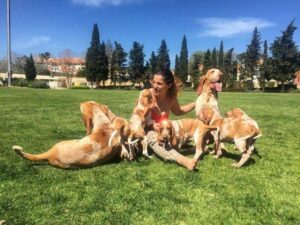
Raquel Colaco is the breeder behind the Raki’s Place Bracchi Italiani. Read about the kennel’s beginnings, the puppies, and much more!

Lynne Bowley is the breeder behind the Gunsyn Gundogs. Read about the kennel’s beginnings, the sires, the dams, the puppies, and much more!
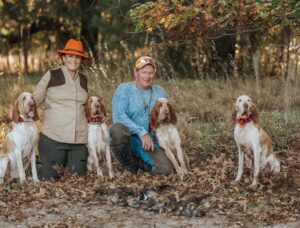
Kristi and Tony Libertore are the breeders behind Whiskey Hills Bracco Italiano. Read about the kennel’s beginnings, the puppies, and more!
The best way to ensure a long and happy relationship with a purebred dog is to purchase one from a responsible breeder. Not sure where to begin?
Contact the National Parent Club’s Breeder Referral Program, which is listed on the AKC Breeder Referral Contacts page.
